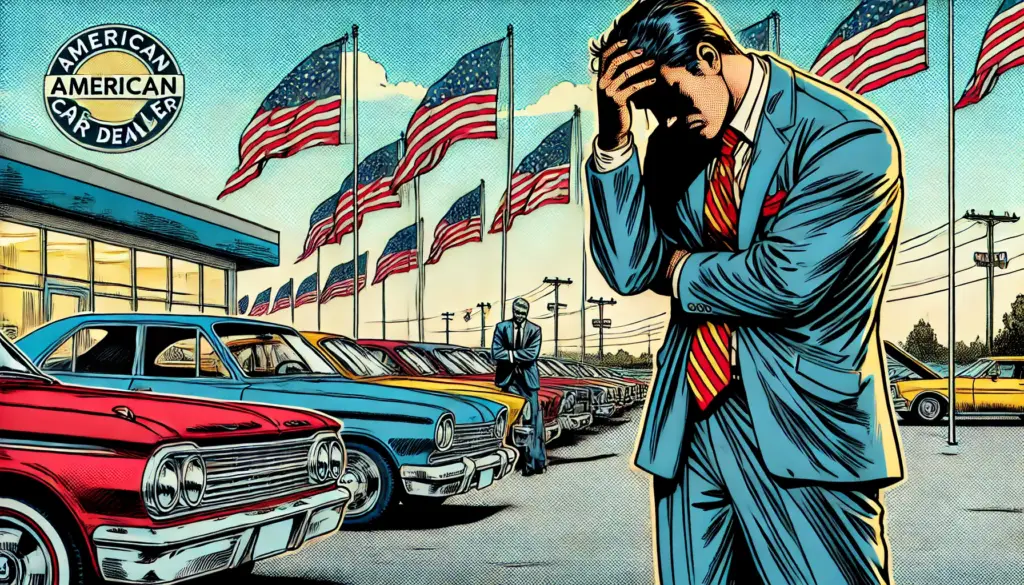
For decades, the American auto industry has struggled to gain a meaningful foothold in Japan. Despite repeated efforts, high-level political negotiations, and occasional media spotlights—especially during Donald Trump’s presidency—the reality remains: American cars simply don’t sell in Japan. In fact, many U.S. car dealerships have withdrawn entirely from the Japanese market.
So, why do American cars continue to fail in one of the world’s largest automobile markets? The reasons go far beyond simple trade imbalances or tariff arguments. In this article, we dive deep into the cultural, structural, and historical context behind Japan’s rejection of American cars—and whether this will ever change.
🚗 A History of Missed Opportunities
The 1980s: First Attempts and Cultural Friction
Back in the 1980s, as Japanese carmakers were dominating U.S. roads with affordable, fuel-efficient cars, American brands like Ford and GM tried to fight back by entering Japan. However, they faced major challenges from the start:
- Large sizes: American cars were simply too big for Japan’s narrow streets and tiny parking lots.
- Fuel inefficiency: U.S. cars were notorious for poor mileage, which was a dealbreaker in a country where gas is expensive and public transportation is excellent.
- Right-hand drive: American manufacturers were slow to adapt to Japan’s driving standards. For many years, they didn’t offer right-hand drive versions, making their vehicles inconvenient and unsafe in Japan.
Despite promotional efforts and even partnerships with Japanese firms (Ford once owned a stake in Mazda), U.S. automakers never gained more than 1% of the Japanese market share.
📉 The Reality of the Numbers
As of 2024, foreign vehicles make up about 6% of total car sales in Japan—and most of those are German luxury brands like Mercedes-Benz, BMW, and Audi. American brands? Less than 0.2%.
What’s more, major U.S. dealerships like Chevrolet, Chrysler, and Ford have all pulled out of Japan or downsized significantly. GM currently operates in Japan through a minimal footprint, while Ford completely exited the Japanese market in 2016. Attempts to re-enter have been cautious and low-profile.
🛑 Misconceptions About Trade Barriers
One of the most common narratives—especially under the Trump administration—was that Japan imposes unfair trade barriers to protect its domestic car industry. But this view doesn’t hold up under scrutiny:
- Tariffs: Japan has zero tariffs on imported cars.
- Import restrictions: There are none specific to American cars.
- Safety regulations: All imports must pass Japan’s strict safety and environmental standards—but these are universal, not aimed at American brands.
The real issue lies not in policy but in consumer behavior and market fit.
🧠 Japanese Consumers Think Differently
Japanese car buyers prioritize reliability, practicality, fuel efficiency, and resale value. Brands like Toyota and Honda dominate because they deliver exactly that.
American cars, on the other hand, are often viewed as:
- Too large for urban use
- Fuel-thirsty and environmentally unfriendly
- Difficult to service, with expensive imported parts
- Lacking in brand prestige, especially compared to European automakers
For example, a typical Tokyo household may own a single small kei car (軽自動車), which is tax-friendly, compact, and easy to maneuver in city streets. Compare that to a full-size Ford Explorer or Chevrolet Tahoe, and the disconnect is obvious.
🔧 After-Sales Support: A Hidden Dealbreaker
Even when American cars do catch the eye of a Japanese buyer, after-sales support is a nightmare. Limited service centers, long wait times for imported parts, and a lack of local know-how make maintenance expensive and frustrating.
Japanese automakers, by contrast, offer:
- Nationwide networks of service centers
- Quick and cheap repairs
- Established resale markets
This practical edge makes it nearly impossible for American cars to compete, even if the initial purchase price is attractive.
🗣️ What About Trump’s Negotiations?
During Donald Trump’s presidency, the U.S. government pressured Japan to open up its auto market further. Trump criticized Japan for not buying “millions of American cars” and accused it of being unfair to U.S. manufacturers.
However, these efforts resulted in no meaningful change.
- Japan didn’t have significant tariffs or quotas to begin with.
- Consumers continued to favor domestic and German brands.
- Even with improved visibility, U.S. cars still didn’t match market needs.
In essence, the Trump administration solved a problem that didn’t exist—at least from a regulatory standpoint—while ignoring the cultural and practical reasons behind consumer preferences.
🔮 Can This Ever Change?
Unless American automakers fundamentally change their approach to the Japanese market, success is unlikely. But here’s what could work:
- Design for Japan: Offer smaller, hybrid, or EV models suited for Japanese roads.
- Right-hand drive commitment: Prioritize RHD versions for all models.
- Aftermarket service network: Build partnerships with Japanese service chains to offer competitive support.
- Leverage EV trends: The growing interest in electric vehicles presents a narrow window of opportunity.
That said, competition from Tesla, BYD, and Japan’s own EV offerings will make even this path difficult.
📝 Final Thoughts
American cars in Japan are not victims of unfair trade barriers, but of market mismatch. Their failure is not political—it’s practical. While nationalist rhetoric and trade talks may generate headlines, the reality on the ground is that Japanese consumers have little reason to choose American cars over more tailored, reliable alternatives.
Unless U.S. automakers are willing to design from the ground up with Japanese consumers in mind, the roads of Tokyo and Osaka will remain largely untouched by the stars and stripes.



















































